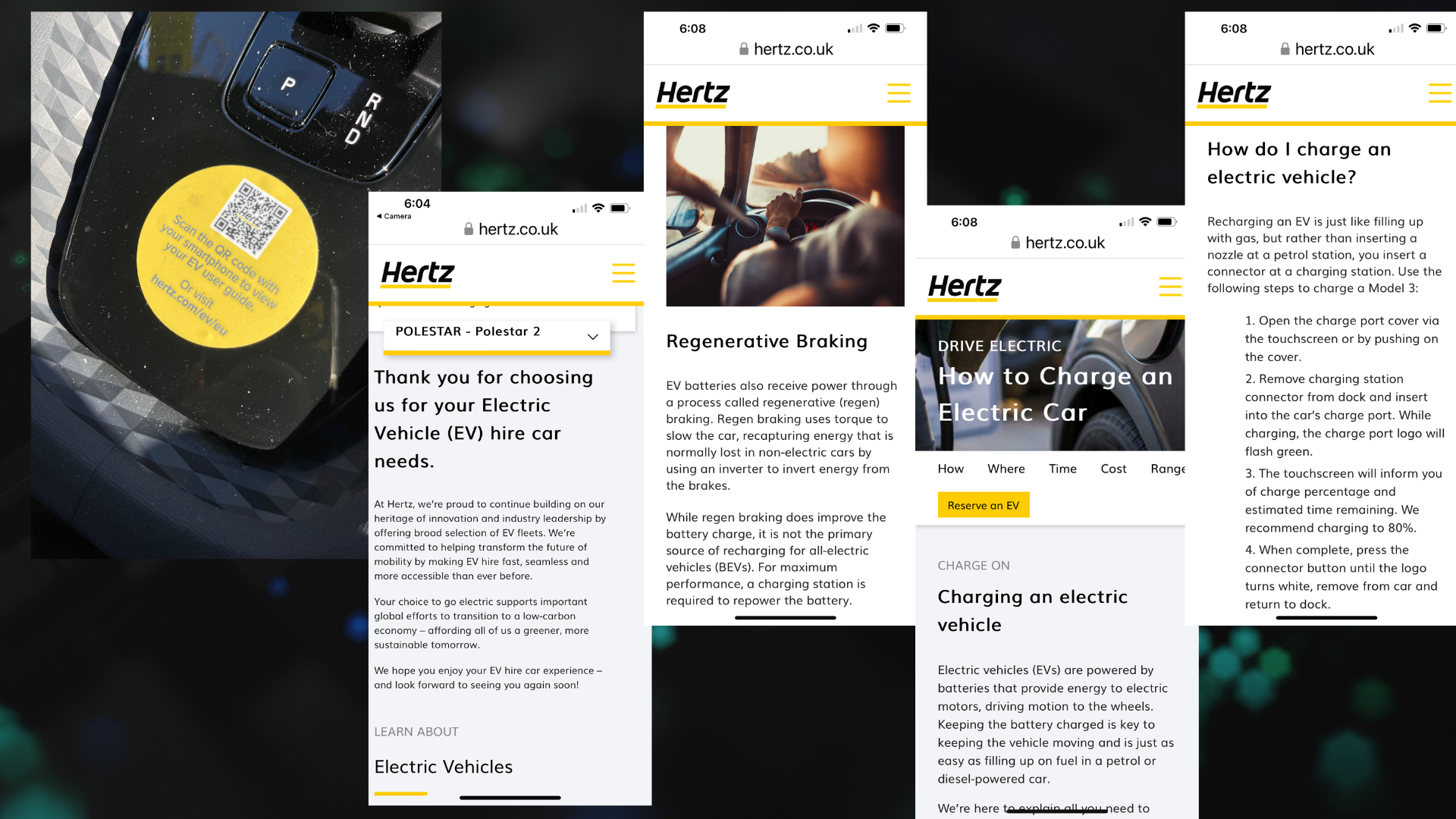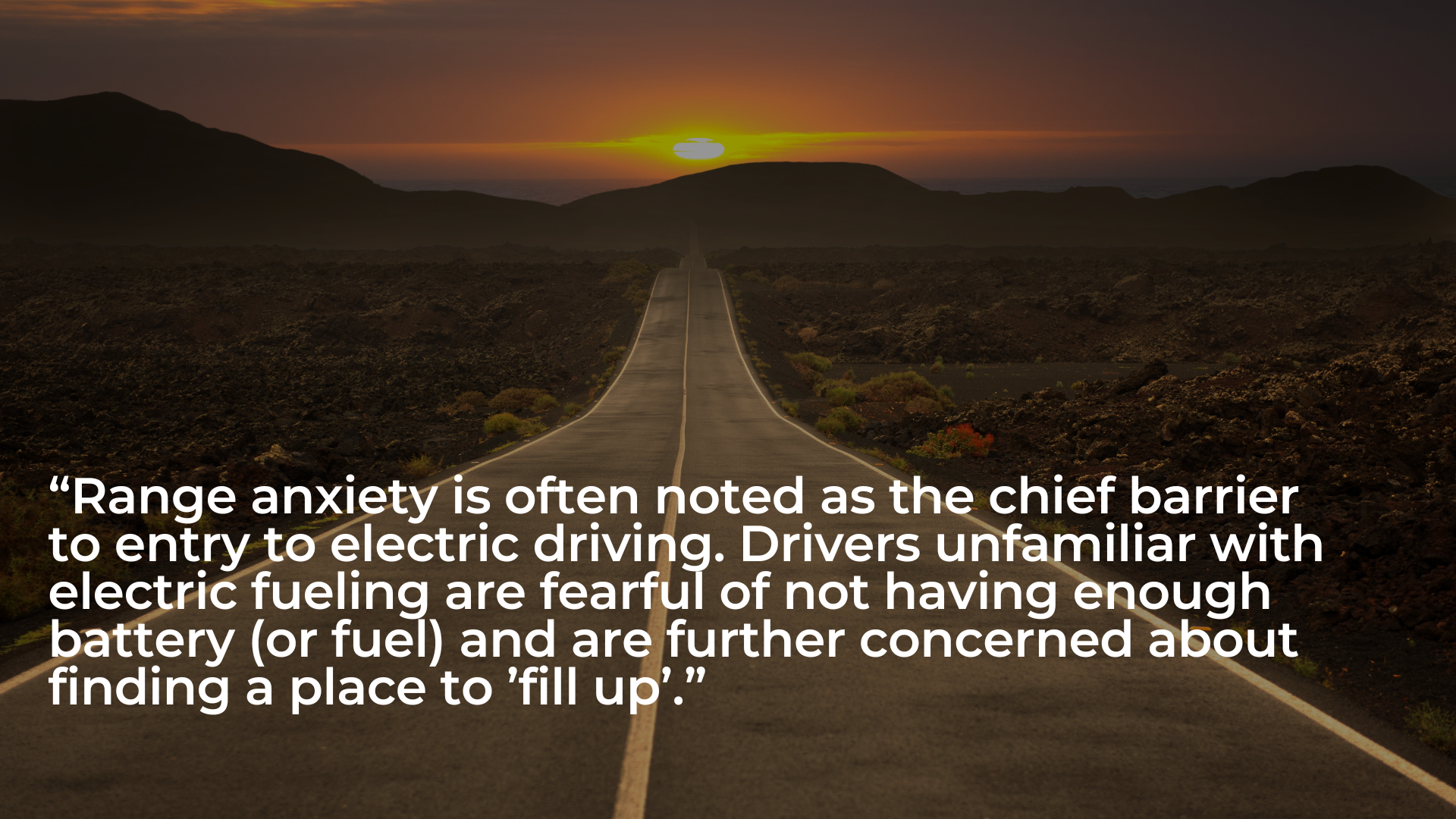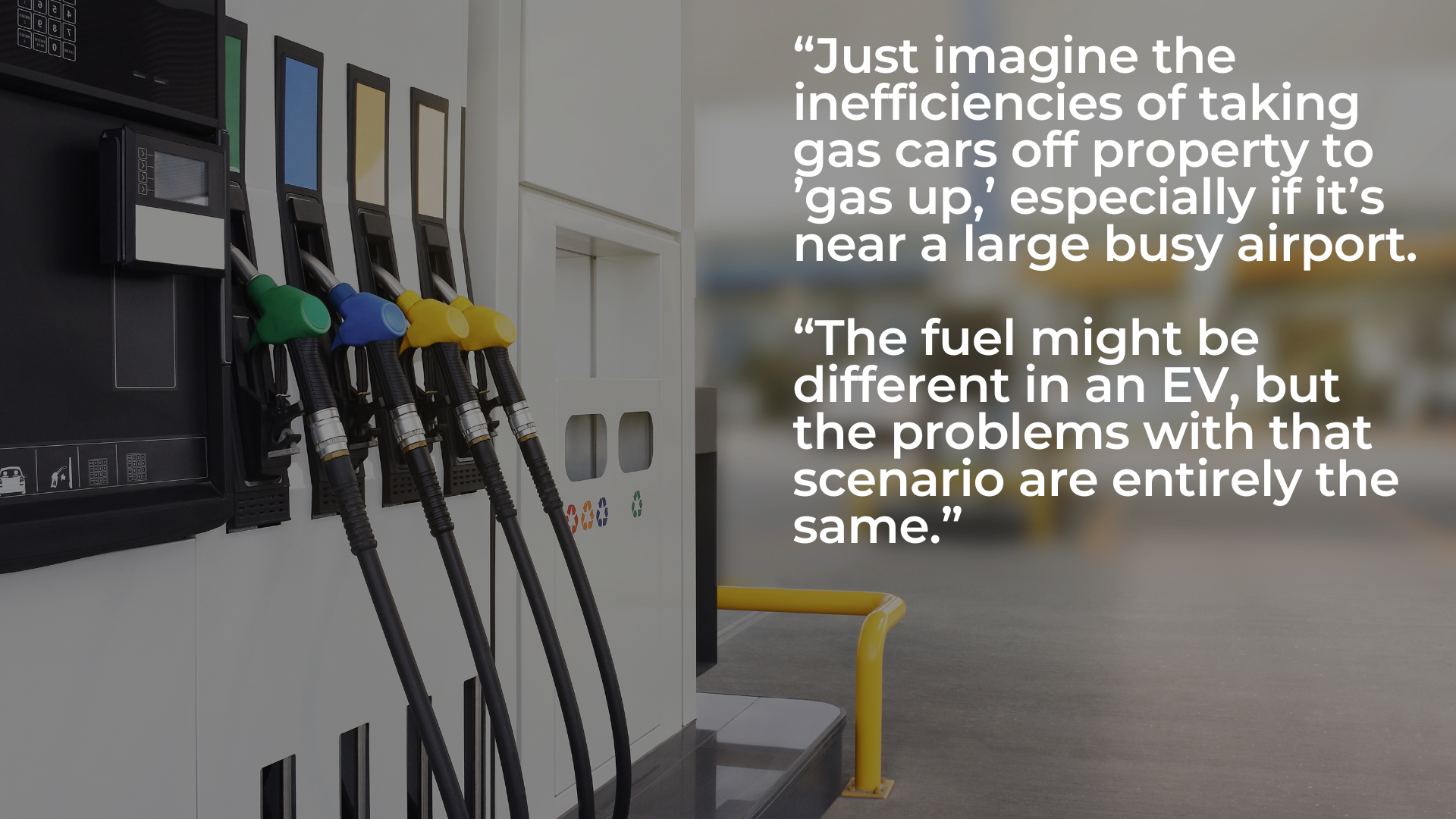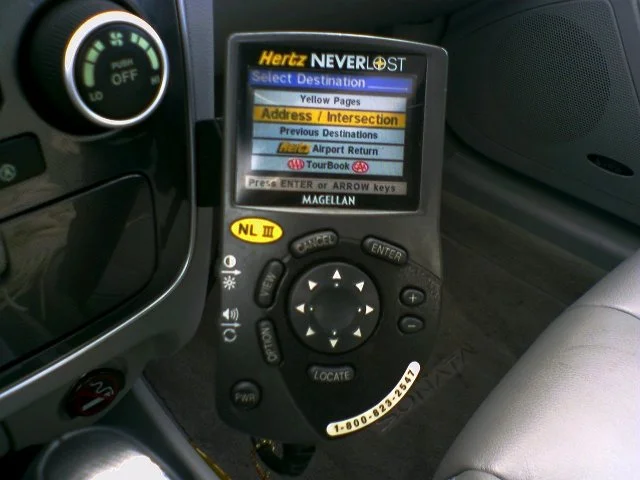Where did Hertz go wrong?
Written by Jim Burness, CEO & Founder, National Car Charging
Over the past few weeks, there has been a lot of press around Hertz's decision to scale back its electric vehicle (EV) initiative. The media has mostly attributed the cutback on depressed resale values of used EVs and their high repair costs for damage. However, I’ve yet to see an article about what I suspect is another key culprit - their rollout strategy.
Before we dive in, let me state up front that I do applaud Hertz for integrating EVs into their fleets. As a category leader, it only makes sense for them to lead the rental market into and through the electrification transition and to come to market as boldly as they did. It was a huge undertaking. Unfortunately, there were some fatal flaws in their strategy as we’ll delve into below.
Change is hard.
Change, whether it’s a transition from gas to electric vehicles, from landlines to cellular phones, or even broadcast TV to cable and then to streaming … it’s an adjustment and not necessarily something that naturally comes easily to everyone. Plus, with change inherently comes fear. Studies have shown fear is hardwired into our brain and is often a barrier to accepting innovation.
Recognizing this one insight into human nature would have changed the game for Hertz from the very beginning.
As a Hertz Gold member, I’ve rented numerous EVs around the world. Most recently, I’ve rented at least five different EV makes and models in as many markets, so I can speak from personal experience. The Hertz rollout fell short in two critical areas: 1) consumer education and communication and 2) site preparation.
A little education can go a long way.
I’ve exclusively driven electric for nearly a decade, so my own need for education about the EV idiosyncrasies and how to charge are essentially non-existent; however, for the majority of Hertz’s customers, it was likely their first experience with an electric car and odds are they were nervous going into the experience.
Driving electric isn’t much different from driving a gas car, but if you’ve never done it before, it can be daunting. The touch screens, often unique dash layout, regenerative braking and so on, may not seem inherently intuitive, but a little education can go a long way to fixing that and soothing any anxiousness the renter might have.
The U.K. website also demonstrated how to charge (fuel) the car.
I had never driven a Polestar 2 when I rented one in London last fall, and thankfully, there was a QR code predominantly placed inside the car. With a quick scan of my phone it led to a website full of easily digestible and “must have’' information about how to operate the car. It included all the basics - everything from locking and unlocking the doors, to how to turn the car on and off, how to put it in gear, and other essentials like operating lights and wipers, using navigation, and even an intro to regenerative braking, which can be an unusual sensation for first-time EV drivers. This proved not only to be helpful in operating the car, but they were also important safety must-haves which I found valuable since I already felt like I was driving on the wrong side of the car and the road.
The website also demonstrated how to charge (fuel) the car. It walked through each step of the process, from finding a station to opening the charge port to monitoring the charge process. The videos could have provided a bit more detail, but they got the job done. My only suggestion - I wished there had been more around finding charging stations, specifically the multitude of different charging networks available instead of exclusively referencing the Shell Recharge network.
The U.S. vs. the U.K.
In sharp contrast, none of the EVs I’ve rented in the United States have come with any sort of in-car guides. If a similar U.S. website exists, it’s eluded me and thousands of others. Social media is overrun with Hertz renters describing how they felt like they were left out in the cold. Story after story tells how they were thrown the keys to an EV, often without having reserved one, and then left to their own devices to figure out the rest. I can’t tell you how many friends have called my wife or me in a panic asking for help.
Clearly something big was missing. It is no secret driving an electric car is a different paradigm in a number of ways; however, once drivers are familiar with it, they usually prefer driving electric. We also know consumers often have a distaste for the unknown, especially if it interferes with a vacation or important business trip.
Communication is key. Hertz could have easily put a QR code in each U.S. EV rental car, on the printed rental documents. While I did receive “learn before you arrive” emails linking to articles several weeks before my rental, videos and something in real time would have been easier to digest. Americans like to be shown how to do things rather than read articles or long instructions, and Hertz marketing should have known this.
The charging infrastructure just isn't there.
A further complication was Hertz’s inadequate investment in charging infrastructure at its rental facilities - infrastructure that would easily allow all drivers to leave the lot with a full battery. Nearly every Hertz EV I’ve rented came with a battery that was 80% full or less and the only instructions I received was to bring it back at the same level or I could opt out and pay the $25 fee.
Range anxiety is often noted as the chief barrier to entry to electric driving. Drivers unfamiliar with electric fueling are fearful of not having enough battery (or fuel) and are further concerned about finding a place to “fill up.” Had Hertz installed sufficient infrastructure at its rollout locations, most vehicles would have left the lot at 100%. This simple step would have provided some immediate peace of mind to those EV newbies as well as reassured the EV veterans driving around a potential unfamiliar city.
While Hertz didn’t publish their rollout strategy, they did announce a $1 Billion contract with a large EV charging partner in 2022. Nearly a year after the announcement, however, none of the facilities I visited had anything close to infrastructure one would expect with this level of investment. Recently, a Hertz team member at one of Hertz’s largest airport facilities shared with me that more often than not, they had to rely on an inconvenient and costly off-site fast charger network to “fuel” their rental vehicles. Just imagine the inefficiencies of taking gas cars off property to “gas up,” especially if it’s near a large busy airport. The fuel might be different in an EV, but the problems with that scenario are entirely the same.
Installing a series of high speed DC fast chargers (which likely could have been subsidized by any of a number federal, state and utility incentive programs), would have delivered a very different product introduction.
A strong customer experience is always good for business.
This would have led to better customer and employee experiences, and allowed the staff to work more efficiently. All too often the time employees spend solving problems and handling irate customers is overlooked, and as we all know, time is money. The time required to solve problems is also emotionally draining on both customers and employees, and neither are ever very good for business.
Investing the time to train employees on the nuances of the different electric vehicles available to rent, on the ins and outs of charging, and on the operating basics at each of the rollout locations would have paid off hugely in customer satisfaction. This is something that Hertz could easily have partnered with the manufacturers on, and I suspect, they would have jumped at the opportunity. It’s in the manufacturers’ best interest for the rental experience to be a positive one as it has the potential to accelerate the adoption curve.
While Hertz may have had the best of intentions, their execution fell short. They not only did a poor job educating drivers on how to use their rental, they simultaneously made them primarily responsible for charging it without any support in place. They also didn’t adequately plan for refueling nor give their employees the tools to be successful as EV ambassadors. In a nutshell, the program nor the drivers or employees were ultimately set up for success.
It’s easy to cast blame on the cars, but in all honesty, I don’t believe fault lies entirely at their feet, despite what the press says. Looking inward, big mistakes were made.
The reality is, there is a lot on the line here, and taking a closer look is more than vital. Believe it or not, the rental car market plays an indispensable role in the electrification transition. Not only do they create an opportunity to introduce gas drivers to the new technology, their cars also make up a large portion of the electric rideshare fleets. The rental car industry also highly influences and feeds into the used car markets which is particularly important in increasing EV access and equity. And for isolated locations like Hawai’i, the rental car business is even more tightly tied to the used car market and can significantly help the state reach their aggressive zero emission goals.
Hertz also did a lot right.
The Hertz program fell short, but also they also did a lot of things right. They jumped in feet first and committed to something new, partnering with the big EV automakers like Tesla. Initially, EVs were introduced as luxury vehicles, but they quickly pivoted in response to the market and priced their EVs on par with their gas vehicles to encourage use and engagement. It worked.
As leader of my own organization, this is a great lesson learned about how prepared companies need to be when they are bringing something new to market, especially something that is in many ways new to their wheelhouse.
Hertz has been in the rental car business for over a century, and in that time, has successfully rolled out many new products; however, most all have focused on customer service programs with the exception of their cell phone launch in the 1980s and Neverlost GPS system introduction in the early 2000’s. While groundbreaking, neither of those programs had the scope and investment of this one. They also weren’t introduced into a landscape of critics, intentional misinformation, and political divide, all which bring their own set of uphill challenges.
The economics will drive us forward.
Despite this rough start though, I am confident renting an EV will become a mainstream choice sooner rather than later. Beyond the environmental impact, EVs can save rental car companies millions in maintenance and fuel costs - as much as 37% and 68% respectively. The economics have been proven and in that respect, the decision to integrate EVs into their fleet was unlikely a lofty one on Hertz’s part and one we’ll see re-rolled out in the near future, albeit grounded in the lessons learned over the last year.
About Jim Burness.
Jim Burness founded National Car Charging (NCC) in 2011 with the belief that business can thrive while doing good for the planet. Twelve years later, NCC and its sister company, Hawai’i-based Aloha Charge, are collectively the leading reseller and installer of electric vehicle infrastructure in the country and Jim is considered one of the nation’s top EV and charging experts. With previous careers in both the automotive industry and the renewable energy sector, Jim launched NCC to facilitate the build out of the nation’s EV charging infrastructure and manages 11,000+ ports nationwide across 1100+ customers with installations in 48 states. Jim is actively involved in Colorado’s local sustainability community, works closely with many utilities around the country, and is passionately involved in sustainability legislation and several leading influential EV councils. A graduate of The Colorado College and the University of Denver, he’s previously held positions at J.D. Power, American Honda, and Microsoft’s CarPoint. Jim and his wife purchased their first electric car in 2012 - seven EVs and 12 years later, their entire family now drives completely fossil fuel free.









